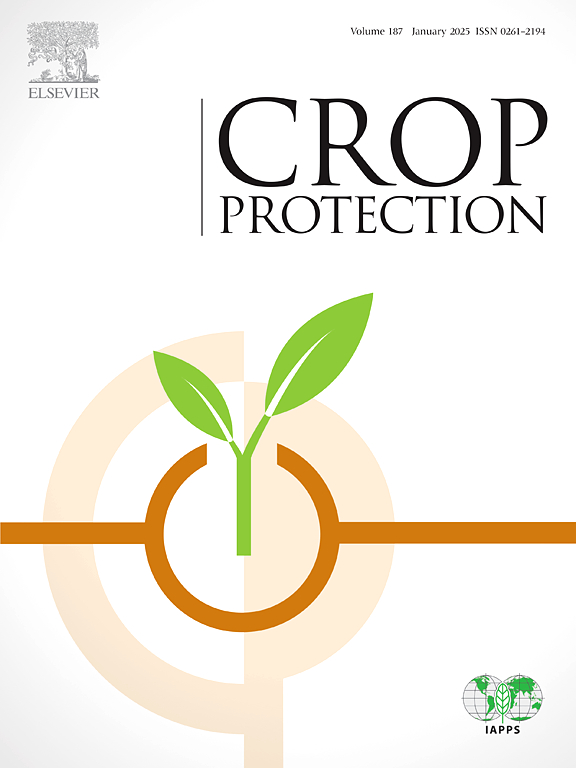Biocontrol potential and characterization of cell-free supernatants from Xenorhabdus nematophila: A novel approach to control Tetranychus urticae
IF 2.5
2区 农林科学
Q1 AGRONOMY
引用次数: 0
Abstract
The two-spotted spider mite (Tetranychus urticae) poses a significant threat to global agriculture due to its wide host range and rapid development of resistance to chemical pesticides. This research explores the acaricidal effects of cell-free supernatant (CFS) derived from Xenorhabdus nematophila, a bacterium that symbiotically associates with Steinernema carpocapsae, against T. urticae. In vitro assessments demonstrated that treatment with X. nematophila CFS at the highest concentration of 109 CFS/mL resulted in complete mortality of adult mites after 72 h. Additionally, in vivo experiments on Lablab purpureus L. plants showed a remarkable 91.0 % reduction in mite populations 14 days after applying a concentration of 108 CFS/mL. To further investigate the chemical composition and mode of action of the CFS, we conducted metabolite profiling and molecular docking studies. Gas chromatography-mass spectrometry (GC-MS) identified a total of 61 metabolites, with fatty acyls constituting the predominant category (49.2%). Notably, 2-octyl-1H-quinolin-4-one was the most abundant compound, exhibiting a peak area of 10.27%. Molecular docking analyses revealed strong binding affinities of this compound with critical T. urticae proteins, including TuAchE (−8.8 kcal/mol), TuGluCl (−6.1 kcal/mol), and TuMETI (−7.7 kcal/mol), indicating potential disruption of essential physiological functions in the mite. Importantly, the CFS demonstrated minimal toxicity to beneficial organisms, such as the predatory mite Neoseiulus longispinosis and honey bees Apis cerana indica, suggesting its safety for non-target species. Overall, our findings highlight the promising role of X. nematophila and its bioactive compounds as effective and environmentally friendly alternatives for managing T. urticae populations, contributing to sustainable agricultural practices.

求助全文
约1分钟内获得全文
求助全文
来源期刊

Crop Protection
农林科学-农艺学
CiteScore
6.10
自引率
3.60%
发文量
200
审稿时长
29 days
期刊介绍:
The Editors of Crop Protection especially welcome papers describing an interdisciplinary approach showing how different control strategies can be integrated into practical pest management programs, covering high and low input agricultural systems worldwide. Crop Protection particularly emphasizes the practical aspects of control in the field and for protected crops, and includes work which may lead in the near future to more effective control. The journal does not duplicate the many existing excellent biological science journals, which deal mainly with the more fundamental aspects of plant pathology, applied zoology and weed science. Crop Protection covers all practical aspects of pest, disease and weed control, including the following topics:
-Abiotic damage-
Agronomic control methods-
Assessment of pest and disease damage-
Molecular methods for the detection and assessment of pests and diseases-
Biological control-
Biorational pesticides-
Control of animal pests of world crops-
Control of diseases of crop plants caused by microorganisms-
Control of weeds and integrated management-
Economic considerations-
Effects of plant growth regulators-
Environmental benefits of reduced pesticide use-
Environmental effects of pesticides-
Epidemiology of pests and diseases in relation to control-
GM Crops, and genetic engineering applications-
Importance and control of postharvest crop losses-
Integrated control-
Interrelationships and compatibility among different control strategies-
Invasive species as they relate to implications for crop protection-
Pesticide application methods-
Pest management-
Phytobiomes for pest and disease control-
Resistance management-
Sampling and monitoring schemes for diseases, nematodes, pests and weeds.
 求助内容:
求助内容: 应助结果提醒方式:
应助结果提醒方式:


